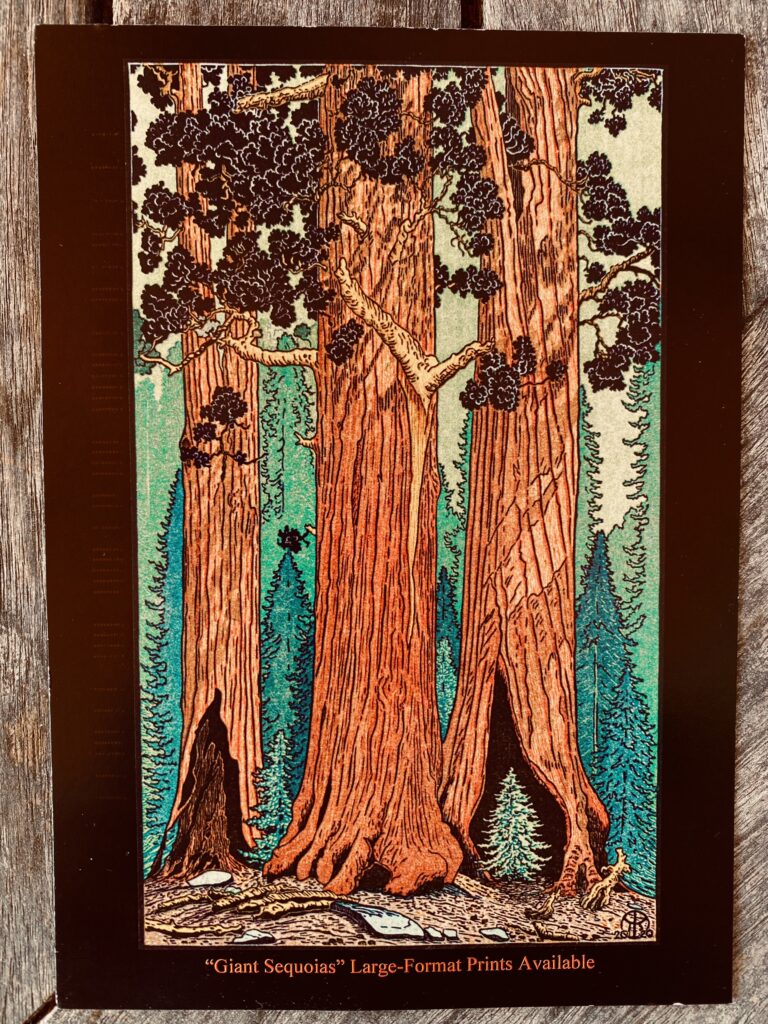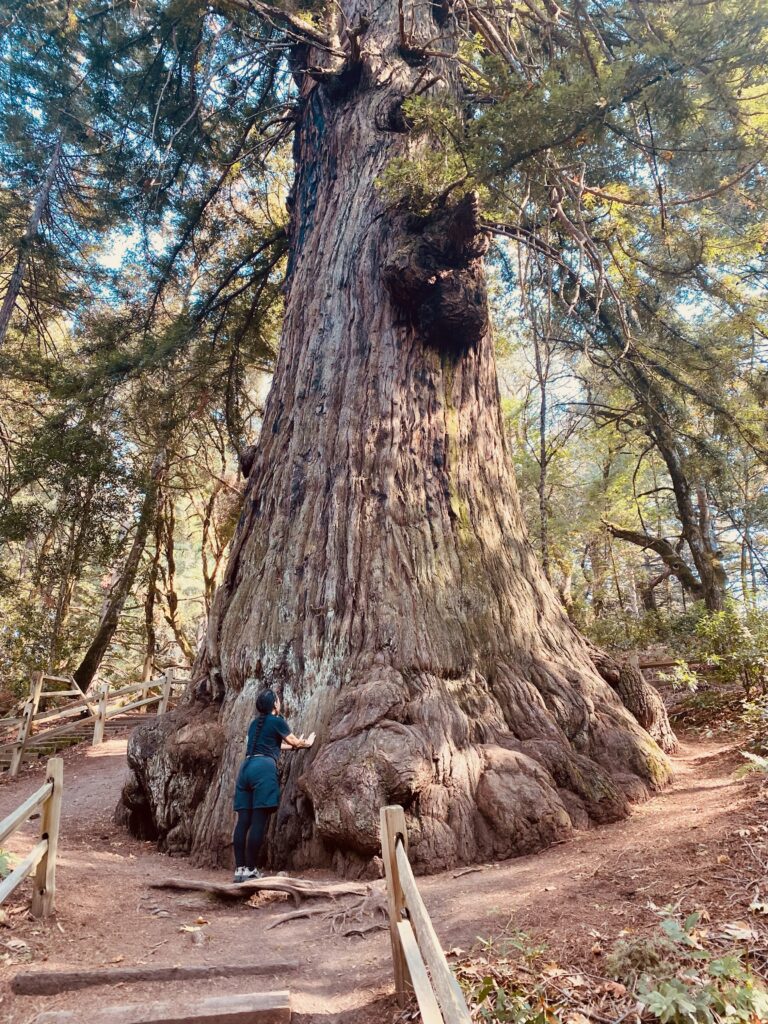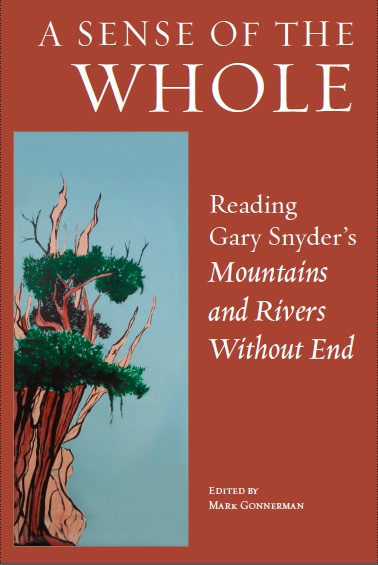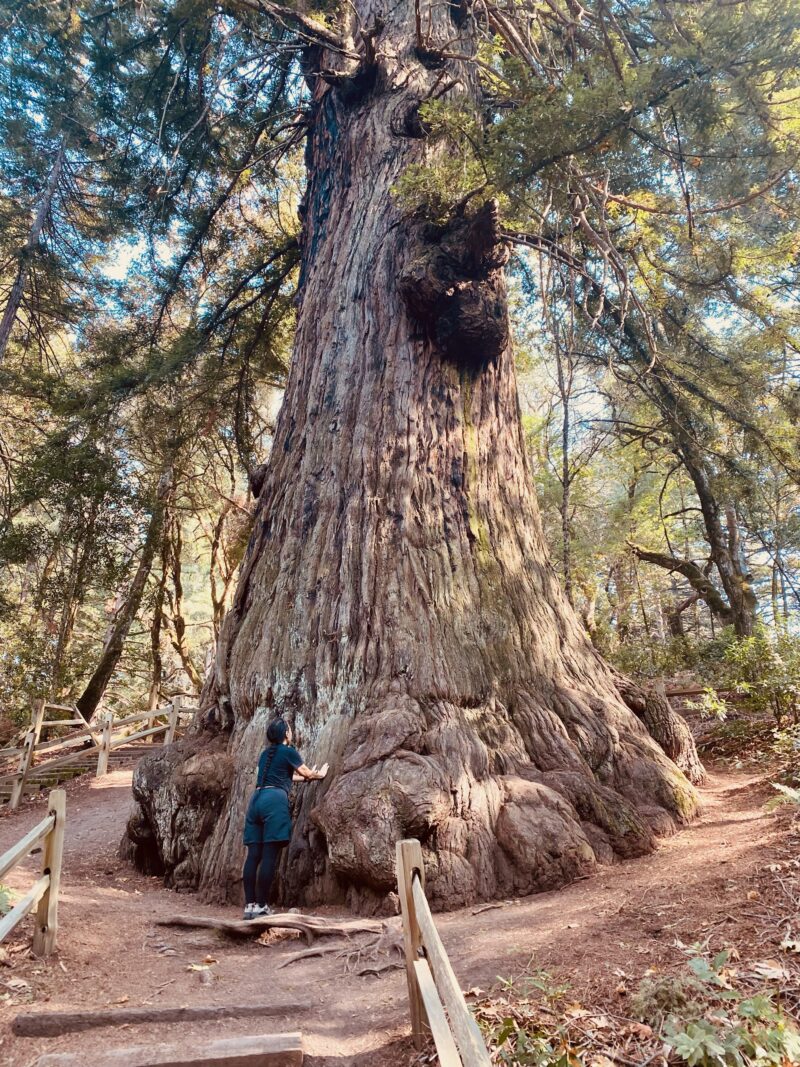Tom Killion’s Giant Sequoias postcard slid through our mail slot today. It announces two upcoming opportunities to appreciate in person one of the Bay Area’s truly great artists. Tom is a consummate craftsperson whose work celebrates the abundant, overflowing, vibrant life that is the more-than-human world that makes us possible.
Do you see how the sequoias here are dancing?

Yesterday, Meri Mitsuyoshi and I visited Methusaleh, the 1800 year-old, old-growth redwood who so graciously reigns in the realm of the Santa Cruz Mountains where, coincidentally, Killion got his start as a fine-art printmaker while studying letterpress printing with Jack Stauffacher (1920–2017) and poet William Everson (aka Brother Antonius [1912–1994]) while an undergraduate at UCSC in the mid-1970s. As many readers here know, Tom has also produced three stunning word-and-image books with Gary Snyder: The High Sierra of California (2002); Tamalpais Walking (2002); and The Wild Coast of California (2020).

Finding this, the largest redwood in the Santa Cruz mountains, was not as straightforward as we thought it would be, but once we were on the right side of Skyline Boulevard we felt the hushed and magnificent presence of this Old Being. It was an unexpected encounter with this elder that inspired Richard Powers to research and imagine the book that is The Overstory (2018), introduced elsewhere on this site.
Go here to flip through the story of this Methuselah (217 CE – ), prepared by the caretakers who are the Peninsula Open Space Trust. An even older Methuselah with a germination date of 2833 BCE lives within the Ancient Bristlecone Pine Forest in the White Mountains, but the precise location of this—the world’s oldest non-clonal living being—is kept secret.
In the Book of Genesis, it is said that Methuselah lived 969 years, which claim is mainly a way to speed up the plot between the story of Adam and that of Noah, the tenth and last of the antediluvian patriarchs in that lineage. For a moment I wondered if selah in the name of Noah’s grandfather (מְתוּשֶׁ֔לַח) was the same word one finds sprinkled throughout the Psalms (סֶלָה), but it is not. While the meaning of this word in the Psalms is unclear, some scholars consider it a kind of instruction to pause and reflect on the majesty of Creation. It is a happy coincidence that the transliteration of the two words in English is the same, for venerable Old Beings ought to stop us in our tracks and give us pause.
In a prior post I wrote that Lushan Temple (麓山寺) on Mt. Yuelu to the east of Hunan University in Changsha was established in 268 CE. So the ancestor in the Santa Cruz Mountains depicted above is only a half-century older than that temple. Why so often do we forget (Powers’ Overstory a reminder as well) that we are all just passing through?
Selah.

